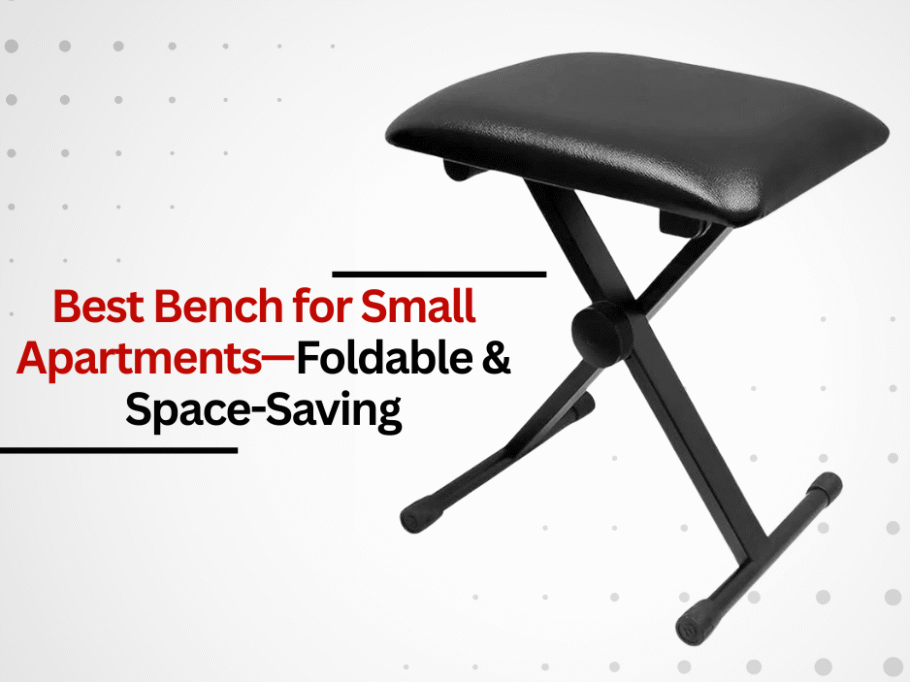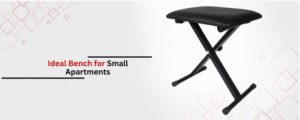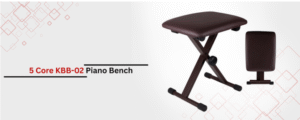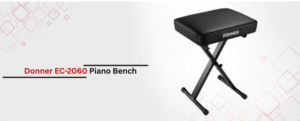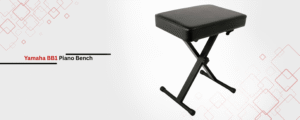In 2025, urban spaces continue to become smaller, which puts strain on furniture that fulfills both functional and space-saving requirements. For music lovers, especially pianists and keyboard players, choosing the right bench goes beyond visuals. The ideal apartment piano bench is supportive, adjustable, and, most importantly, can be easily stored away. The industry’s response to this need focuses on comfort while still being portable. From casual practice to composing digitally, even studio sessions, a foldable bench will not break your back or your bank.
This article will discuss the features a suitable bench should have for small apartments and which defining factors are used for creating compact music furniture today.
What Makes a Bench Ideal for Small Spaces?
Space-Efficient Design:
In smaller spaces, the primary consideration for furniture is how to achieve spatial efficiency. The right bench should offer multifunctionality. It needs to take up as little space as possible while in use and requires even less when stored. A growing number of musicians seek a compact keyboard seat that can be either fully folded or stuffed into tight storage spaces. Bench width, leg design, and adjustability all influence its spatial integration with other pieces of furniture.
Easy Storage and Relocatable:
Apartments typically utilize foldable benches constructed out of steel frames along with other strong and lightweight admixtures due to their convenience in setup and takedown. This is helpful for sharing musicians or those Imus rooms requiring multifunctional furniture. Even the telescopic-legged supported structures and magnetic locks better improve ease of travel so strongly padded handles assist further.
Multi-Use Functionality:
It is crucial to provide flexible furniture in small living spaces. Utility is multifunctional, as many benches now enable practice seating and serve as a utility bench for other daily tasks. This versatility stems from adjustable height features, weight support, and padded seats. In such instances, the bench is best designed in a streamlined design to prevent visually and physically dominating a small space.
Key Features to Look for in a Space-Saving Piano Bench
Adjustable Height Mechanisms:
Adjustable height features guarantee proper wrist and posture alignment with the user’s keyboard and adapter for size while ensuring effortless adjustment. Some apartment piano bench models feature twist knobs or gears that offer height changes while ensuring stability, adapting to different playstyles and setups.
Cushioning and Comfort:
Even in sleek designs, bodily comfort maintains its standing importance. It is achieved through the application of high-resiliency foam, leatherette, and other fabrics in today’s compact bench seat designs. Some portable benches provide moderation between the level of cushioning and easy transportation so that users do not have to forgo comfort during prolonged engagements.
Load Capacity and Stability:
A robust, well-balanced base avoids wobbling or any instability throughout playing. Foldable benches need to have equilibrium between how foldable they are and how strong they are. That is why heavy-duty steel along with reinforced joints is a common material for these types of block benches.
Best Piano Benches for Small Apartments in 2025
5 Core KBB-02 Piano Bench:
The 5 Core KBB-02 Piano Bench is an excellent choice for small apartments, combining a foldable, space-saving design with features that promote optimal playing posture and minimize fatigue. It easily folds flat, allowing it to be tucked away in tight spaces like closets or under beds, making it exceptionally convenient for limited living areas. Despite its compactness, the bench is engineered for comfort and healthy ergonomics, featuring a 2-inch-thick sponge-padded seat that supports optimal playing posture and helps prevent fatigue during extended practice. It also comes with multiple height adjustments from 12 to 19 inches, allowing players to find their ideal position, reducing strain and supporting extended, fatigue-free practice. The sturdy metal alloy construction supports up to 370 lbs, and non-slip rubber caps keep the bench stable and protect floors from scratches.
Pros:
- Compact, foldable design for easy storage in small spaces
- Thick, 2-inch sponge padding offers comfort and helps prevent fatigue during extended use
- Adjustable height (12–18.5 inches) promotes optimal playing posture for all users
- Heavy-duty metal alloy frame supports up to 370 lbs for reliable stability
- Non-slip rubber caps prevent sliding and protect floors from damage.
- Ergonomic design supports long, comfortable sessions without strain
Cons:
- Overall, I liked the piano bench. I was expecting 3 days of delivery, but I received it after 4 days, which is negligible.
Upgrade your practice and performance setup—choose a piano bench that delivers ergonomic comfort and reliable support.
Find the ideal piano bench for your space and playing style—explore adjustable, cushioned options built for lasting use.
Donner EC2060 Piano Bench:
The Donner ECD2060 Bench has an X-style design that folds to a compact size for ease of transport. It features a metal frame, non-quilted foot grips, and a ply-mute quilted pad with an unfixable plush cover
Pros:
- The thick padded quilted seat cushion ensures comfort, even during prolonged playing.
- Ideal for musicians who travel frequently or perform at multiple locations.
- Its collapsible design makes it easy to store.
- The added non-slip rubber feet ensure stability and no slipping.
- Perfect for home use or mobile performances, its minimalistic footprint offers incredible convenience.
Cons:
- The Fixed height may not be ergonomically optimal for all users.
- Absence of a storage compartment makes this stool impractical for users with accessories.
- For longer practice sessions, the lack of back support might feel uncomfortable.
- Over time, padding for heavier users may become an issue if used daily.
Yamaha BB1 Piano Bench:
The Yamaha BB1 bench has a classic look and works well with both traditional and modern pianos. It is a wooden bench designed to provide comfort through rest and stability during practice; the dense foam cushioning on the bench helps relieve fatigue over extended periods of practice.
Pros:
- The thick cushion padding ensures optimal comfort during extended playing hours.
- The non-slip rubber feet ensure stability on uneven floors.
- The robust bench build ensures long-term durability.
Cons:
- Fixed height adjustments, which might not be ergonomically optimal for some users.
- Bulkier design makes it less portable.
- It also becomes hard to store and is not made for cramped spaces.
- Due to no nonslip rubbers, users may experience wobble on uneven floors.
- A bit expensive as compared to other standard models.
Conclusion
As more musicians reside and perform within smaller spaces, piano benches that incorporate mobility, compact storage, and comfort simultaneously are becoming more common. The apartment piano bench is now multifunctional, serving as a seat and adaptable amenity responsive to current lifestyle demands.
Brands like 5 Core, Yamaha, and Donner have all been known to provide for the ever-changing user needs. They each aid in the balance of form to practicality. These brands are selected for their sturdiness, ease of transport, and even uncluttered aesthetics. All of these qualities reflect the shift in musical lifestyles. What the change brings in the future is uncertain.

